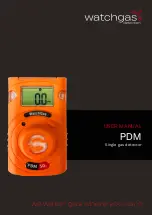
How Instant-on (Pulse) Radar Works
As a defense against detectors, many radar units can be
operated in the Instant-on mode, also called the Pulse
mode. This means the radar is in position, but it is not
transmitting a beam. So it cannot be detected. When the
target is within range, the radar operator switches on the
beam and the radar calculates the speed, usually in less
than a second. This calculation happens too quickly for
the target (you) to respond in time.
Still, you can defend against Instant-on by recognizing it
when the operator zaps traffic ahead of you. Valentine
One’s great sensitivity — and your attention to the nuances
of its warnings — gives you at least a sporting chance.
The Difference Between X Band and the K Bands
X-band alerts (“Beep”) are often found at long distances.
K and Ka bands are usually detected at closer range, and
alerts on those frequencies are much more likely to be
radar. So Valentine One makes a different sound (“Brap”)
to warn you of these more urgent threats (bogeys).
What are False Alarms
Since all radar detectors are simply radios tuned to
the microwave frequencies used by traffic radar, they
automatically sound their alert whenever they encounter
signals on those frequencies.
The problem is, other devices that are not radar are also
operating on radar frequencies. A detecting radio must
respond to them too. Every response indicates a threat, a
bogey. How can you tell the difference between radar and
what people commonly refer to as false alarms? Your
judgment is the only way. But here are the basics:
•
X band:
A catch-all band, still used regularly in some
areas by traffic radar, but heavily populated by sensors
for supermarket automatic doors and other nuisance
signals. In shopping areas, expect door sensors. But
know the territory. Unless you’re sure that X band is
not used locally for radar, stay alert until you’ve
identified the bogey.
•
K band:
Maybe radar, maybe not. Supermarket door
sensors operating on K have recently begun corrupting
this formerly reliable warning of radar. Another non-
radar source — cheapie radar detectors that pollute by
transmitting on K.
5
Summary of Contents for V1
Page 2: ......










































